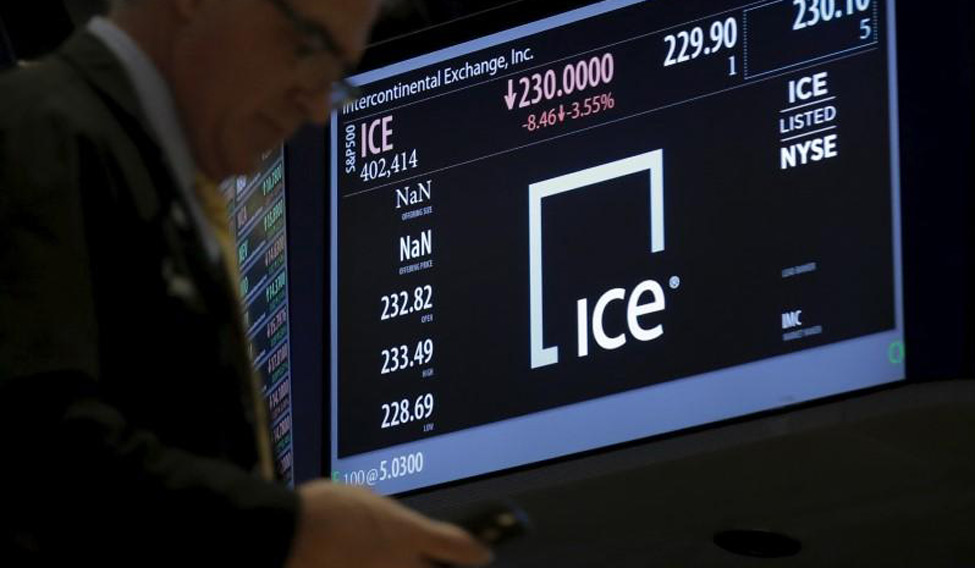A committee of global banks will vote today on an alternative to the London Interbank Offered Rate (Libor) for use as a benchmark U.S. interest rate for derivatives contracts, after a decline in short-term bank lending since the 2008 financial crisis undermined faith in the rate.
Reforms to banking and money market fund regulations, along with allegations of Libor manipulation before and during the crisis, has resulted in fewer interbank short-term loans and reduced funds' demand for bank debt, so Libor rates are sometimes estimated rather than based on actual transactions.
As a result, bankers and regulators in the United States, Britain, Europe and Japan are developing alternative benchmark interest rates.
“Getting a rate that’s supported, that’s well-built and robust, is very important because they need to move a lot of the swaps market off of Libor,” said Darrell Duffie, a finance professor at Stanford University, who chaired a committee of market participants that advised the Financial Stability Board on reference rate reform.
The two alternative rates under proposal in the United States are the Overnight Bank Funding Rate, an unsecured bank lending rate based on transactions in the fed funds and eurodollar markets, and a rate based on overnight lending in the U.S. Treasury collateralised repurchase agreement, or “repo”, market.
Over time, the new benchmark may be used as a reference rate for corporate loans, residential mortgages and credit cards.
“The hope is that whatever rate emerges can be the basis of a liquid enough market that it can be used for many different purposes, just as Libor is,” Duffie said.
However, the process of building trading volumes around the new benchmark is likely to be slow. Asset managers, corporations and other swaps users are unlikely to trade any contracts based on the new rate until liquidity has been established.
Private and exchange-traded derivatives have by far the largest exposures to U.S. dollar Libor, at around $150 trillion.
To regulators including the Federal Reserve, the size of the derivatives exposures creates systemic risks for financial markets if liquidity in Libor falls further.
Fed data shows that interbank lending activity at U.S. commercial banks is at its lowest levels since the 1970s.
At a meeting last year of the Alternative Reference Rates Committee (ARRC), which is developing the new benchmark, Fed Governor Jerome Powell warned that “benchmarks sometimes come to a halt.”
ICE Benchmark Administration, which took over administration of Libor from the British Bankers' Association in 2014, said last year that only around 30 per cent of three-month U.S.-dollar Libor submissions were transaction-based in 2015. ICE declined to comment on the vote for the new rate.
A SLOW TRANSITION
The process of moving to a new benchmark rate is likely to be slow, but over time it may reshape financial markets.
“Any movement away from Libor for United States dollar transactions, however its stage and whatever the scope of that transition, will undoubtedly have profound implications for financial markets throughout the world,” said David Duffee, a finance partner at law firm Mayer Brown in New York.
One issue is that both rates under consideration are for overnight loans, and there is not yet a market for term loans such as one and three months, as in Libor.
“There are a lot of questions about how they will be replacing three-month Libor contracts. My guess is that the market will continue to use Libor until the time that a term market in the new index develops,” said Sam Priyadarshi, head of portfolio risk and derivatives at Vanguard in Malvern, Pennsylvania.
Three-month Libor contracts are used as the reference rate for most interest rate derivatives.
Banks also rely heavily on the CME Group’s (CME.O) Eurodollar futures market, which is Libor-based, to hedge swap transactions, so liquidity in similar futures contracts based on the new benchmark will likely be needed to boost trading in swaps contracts based on the new rate.
The ARRC indicated in its interim report in 2016 that clearinghouses that guarantee swap trades should begin by offering banks and other participants an option for payments based on the interest rate swaps daily value using the new rate.
That is expected to help build liquidity around the new rate before trading begins. The creation of a new market to trade the basis between Libor-based swaps and contracts based on the new rate is also envisioned.





